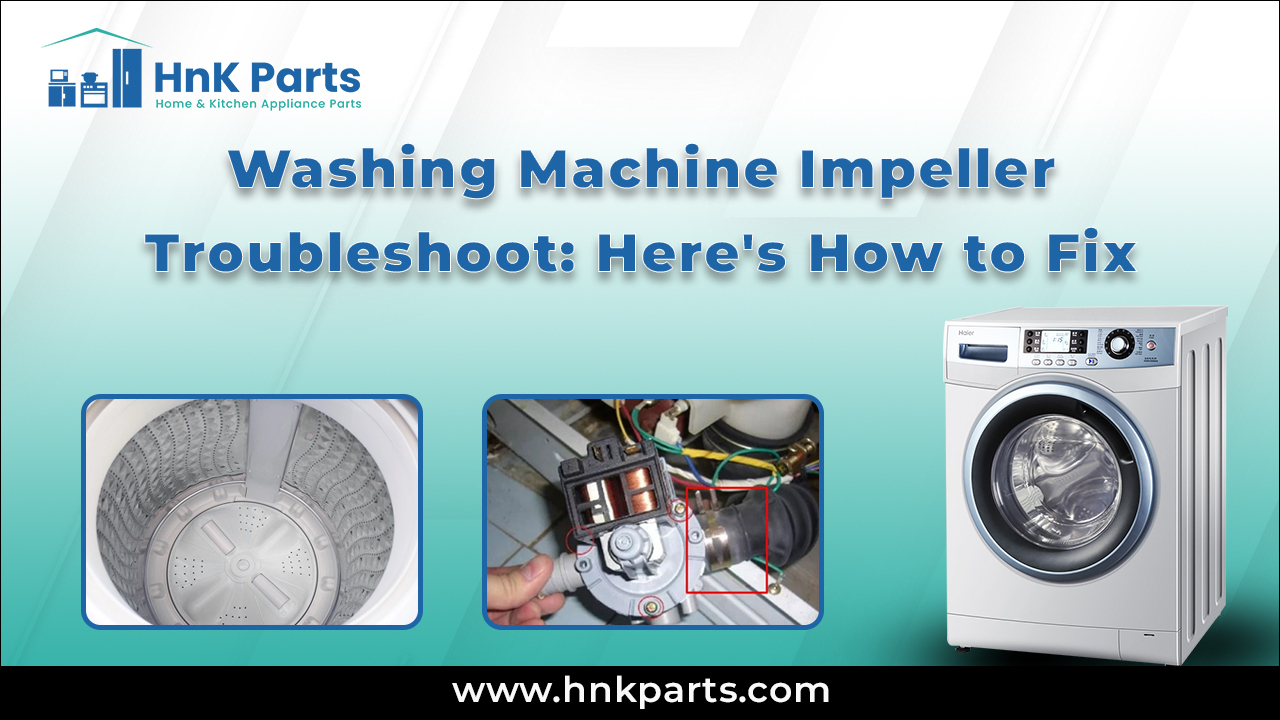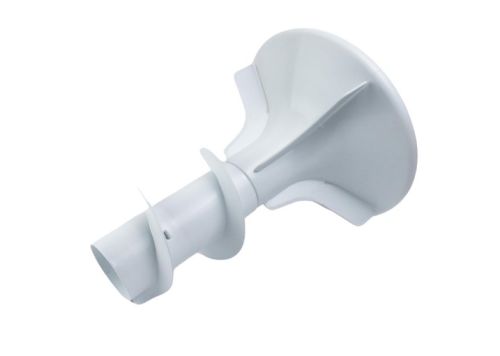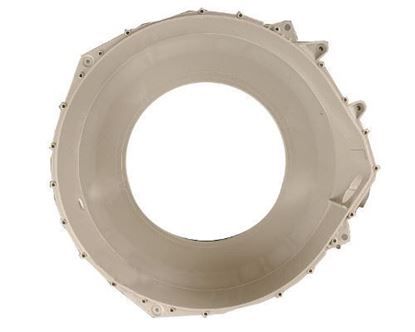
Washing Machine Impeller Troubleshoot: Here's How to Fix
Modern laundry appliances have a washing machine impeller that helps clean clothes efficiently and gently on delicate fabrics compared to traditional agitator models. For several years, impeller washers have become increasingly popular because of their innovation the design uses a low-profile impeller which tends to move clothes, gently but efficiently. One must first understand its mechanics to troubleshoot and maintain an impeller washing machine.
How an Impeller Washer Functions
An impeller washer works by having a rotating hub located at the bottom of the wash drum. The impeller creates turbulence in the water, which causes clothes to rub against one another, unlike traditional agitator models that use a tall central post with fins that scrub clothes against each other. Impeller stackable washing machines are a popular choice for those in search of a space-saving laundry solution due to the fact this method uses less water and energy. The outcome is a gentle wash cycle that is also effective.
Common Signs of a Faulty Impeller in a Washing Machine
If your laundry is not working out well, a poor impeller could be one of the underlying problems in the washing machine.
|
Indicator |
Description |
|
Clothes not coming out clean |
The laundry remains dirty after a wash cycle. |
|
Unusual noises during the wash cycle |
Strange sounds such as grinding or rattling. |
|
Water left in the drum after the wash |
Water does not drain properly. |
|
Clothes sitting on top of the drum after wash |
Clothes are not properly agitated or spun. |
How to Keep Your Washing Machine Impeller in Top Condition
Troubleshooting Common Impeller Issues with Step-by-Step Fixes
The washing machine impeller is a very important part that helps in moving the clothes during the wash cycle. With time, users may face certain issues about the performance of the impeller. Some common problems and their step-by-step solution are given below.
1. Impeller not spinning
Symptoms: The impeller does not rotate and the washing machine fills with water, but the clothes are unclean.
Possible causes:
-
Obstruction by foreign objects
-
Faulty impeller motor
-
Worn-out drive belt
Solution:
-
Safety first: Turn off the water supply and unplug the washing machine.
-
Inspect for obstructions: Check inside the washer drum and open it to see if there are any items such as coins or buttons stuck around the impeller. Remove any found debris.
-
Examine the drive belt: To inspect the drive belt, access the back panel of the machine. Replace it if worn or broken.
-
Test the impeller motor: Check the motor’s continuity with a multimeter. Replace the impeller motor if defective.
2. Impeller Making Unusual Noises
Symptoms: Grinding or rattling noises during the wash cycle that are loud.
Possible causes:
-
Foreign objects trapped under the impeller.
-
Damaged impeller blades
Solution:
-
Safety first: Ensure the machine is unplugged.
-
Inspect the impeller: To access the impeller, remove the agitator cap (if applicable). Remove any trapped objects.
-
Check for damage: Replace the impeller if the impeller blades are cracked or broken.
3. Washing Machine Not Draining Properly
Symptoms: After the wash cycle, water remains in the drum.
Possible causes:
-
Clogged impeller or drain pump
-
Faulty drain pump
Solution:
-
Safety first: Unplug the machine from the power source.
-
Access the drain pump: Find the drain pump at the bottom front of the machine.
-
Inspect for clogs: Take out any debris obstructing the impeller or pump.
-
Test the drain pump: If cleaning does not solve the problem, test the pump and replace it if it does not work.
4. Impeller Not Moving Clothes Effectively
Symptoms: The clothes do not thoroughly clean and remain at the top of the drum.
Possible causes:
-
Worn or damaged impeller fins
-
Overloading the washer
Solution:
-
Inspect the impeller: It also checks for signs of wear or damage to the functioning parts of the tool. Replace the impeller if needed.
-
Adjust load size: Don’t turn the machine Make sure you’re not overloading the machine. Load capacity should be by the manufacturer's guidelines.
The lifespan of your impeller washing machine can be prolonged through regular maintenance and if potential problems are attended to immediately. If the problem continues, it is recommended to seek a professional technician for further diagnosis and repair.
Essential Repair and Maintenance Tips
1. Cleaning the impeller: It is necessary to clean the impeller for optimal performance. Factors that can hinder its functionality include debris and buildup.
To clean the impeller:
-
According to the manufacturer’s instructions, remove the impeller.
-
Clean the surrounding area of the impeller and any debris that might have been collected underneath.
-
With warm, soapy water, wash the impeller, rinse and reinstall.
2. Replacing a faulty impeller motor:
If you find out that the impeller motor needs to be replaced, here is what you should do:
-
Find a motor that is compatible with your washing machine’s model.
-
Turn off the washing machine from the power source.
-
To access the motor, remove the back panel.
-
Remove the faulty motor by unscrewing and disconnecting it, and replace it with the new one making sure everything is connected securely.
Best Practices for Routine Maintenance
In order to prolong the lifespan of your impeller stackable washing machine, you should incorporate routine checks as well as maintenance practices.
-
Regularly clean the lint filter.
-
Inspect nests of wear and leaks on hoses.
-
Periodically run a maintenance cycle with a washing machine cleaner.
-
Make sure that the impeller is not strained by improper loading.
When to Seek Professional Help
Many issues can be solved at home, however, there are also situations when the services of repair professionals are necessary. These may include:
-
Complex electrical issues.
-
Problems that do not resolve with typical troubleshooting.
-
If the cost of repair is close to the price of replacing the appliance.
-
There may be cost considerations as well. If repairs are extensive and your washing machine is old, it may be more economical to buy a new unit than to continue with repairs.
10 Most Common Washing Machine Problems And Solutions
By keeping your impeller washing machine in good working order and knowing the common issues that it can run into, you can make it throw more sets per stroke which in turn extends the life of the machine. Inspecting parts like the washing machine impeller regularly and addressing issues like the impeller not spinning, unusual noises, or improper draining will help ensure the unit operates efficiently. HnKParts is your go-to destination for all your home appliance requirements. We provide an extensive range of washing machine replacement parts available online. This includes motors, hoses, agitators, timers, and a variety of other parts.
FAQs
What is the procedure for visual inspection of a top load washer impeller?
By turning off the power and removing anything such as clothing or debris. Check the impeller carefully for visible obstruction, cracks, or signs of wear that would adversely affect performance. Check that there are no foreign objects wedged between the impeller and the tub.
How do you measure the functionality of the impeller motor?
Try running a wash cycle and listen for grinds or hums, as these could be related to the motor. Watch the impeller to make sure it is rotating smoothly. Testing the motor with a multimeter can indicate if the impeller is getting power or if it needs to be replaced if the impeller does not move or rotates inconsistently.











